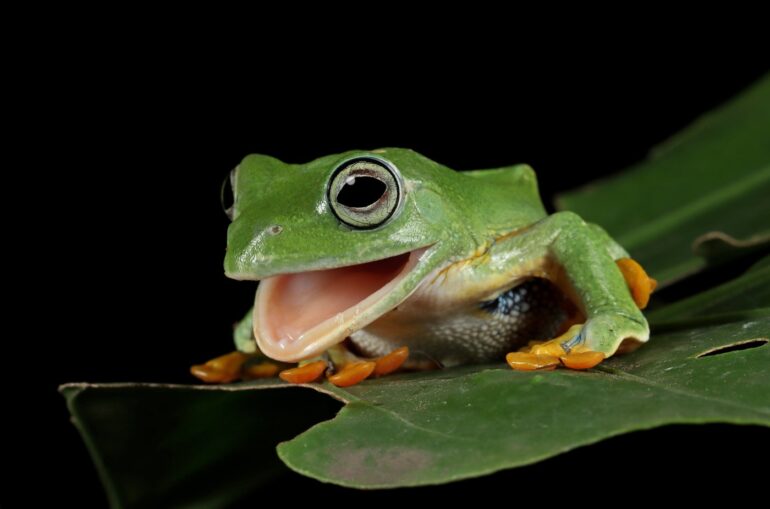Why do zebras have stripes?
After evolving from horses some two million years ago, zebras came to have a distinctive pattern. So why do zebras have stripes? A team of scientists has found at least part of the answer.
A team of life scientists has found at least part of the answer.
Regulating body temperature may be a key factor
It looks like the amount and intensity of striping can be best predicted by the temperature of the environment in which zebras live.
In the January 2015 cover story of the Royal Society’s online journal, Open Science, the researchers, led by UCLA’s Brenda Larison, make the case that the association between striping and temperature likely points to multiple benefits — including controlling zebras’ body temperature and protecting them from diseases carried by biting flies.
“While past studies have typically focused their search for single mechanisms, we illustrate in this study how the cause of this extraordinary phenomenon is actually likely much more complex than previously appreciated, with temperature playing an important role,” said Thomas B Smith, professor of ecology and evolutionary biology in the UCLA College and senior author of the research.
More than one kind of zebra
Larison, a researcher in UCLA’s department of ecology and evolutionary biology and the study’s lead author, and her colleagues examined the plains zebra, which is the most common of three zebra species and has a wide variety of stripe patterns.
On zebras in warmer climes, the stripes are bold and cover the entire body. On others — particularly those in regions with colder winters such as South Africa and Namibia — the stripes are fewer in number and are lighter and narrower. In some cases, the legs or other body parts have virtually no striping.
Why do zebras have stripes? The evolution from horses
Zebras evolved from horses more than 2 million years ago, biologists have found.
Scientists have previously hypothesized that zebras’ stripes evolved for one, or a combination of, four main reasons: confusing predators, protecting against disease-carrying insects, controlling body temperature and social cohesion. And while numerous previous studies of the phenomenon focused on a single hypothesis, the Larison-led study was the first to fully test a large set of hypotheses against one another.
Analyzing zebras at 16 locations in Africa, and considering more two dozen environmental factors, the researchers found that temperature was the strongest predictor of zebras’ striping. The finding provides the first evidence that controlling body temperature, or thermoregulation, is the main reason for the stripes and the patterns they form.
MORE: What’s the difference between a turtle & a tortoise?
Separate research by Daniel Rubenstein, a Princeton University professor of ecology and evolutionary biology and a co-author of the Open Science paper, and Princeton undergraduate Damaris Iriondo strongly suggests that boldly striped zebras have external body temperatures about five degrees Fahrenheit cooler than other animals of the same size — like antelopes — that do not have stripes, but live in the same areas.
Larison has studied many zebras during her fieldwork throughout Africa — including in Kenya, South Africa, Tanzania, Uganda and Zimbabwe. Using the fact that their stripes are unique like fingerprints, she is able to distinguish one zebra from another.
She and her research team have also collected zebra tissue samples and have used cutting-edge technology to sequence zebra DNA to try to identify which genes code for striping. The team is continuing to study the benefits stripes provide.
Update: Why zebras have stripes – The debate goes on
The question of why zebras have stripes is not, so to speak, black and white.
In an October 2015 edition of the online journal Royal Society Open Science, University of California, Davis, professor Tim Caro and Cal State Long Beach assistant professor Theodore Stankowich find both agreement and disagreement with another zebra study.
“Our short paper brings together different ideas about the reasons that zebras have black and white stripes,” Caro said.
The biologists compared their own previous findings to the above UCLA study that appeared in a January 2015 Royal Society Open Science article, “How the zebra got its stripes: a problem with too many solutions.”
Larison’s team studied one zebra species — the plains zebra — and concluded that the amount and intensity of striping was associated with warmer temperatures and high precipitation.
In an earlier April 1, 2014, study called “The function of zebra stripes” in the journal Nature Communication, Caro, Stankowich and co-authors studied all seven species of equids (zebras and horses), and found that avoiding biting flies, including horseflies and tsetse flies, is the evolutionary driver for zebra stripes.
“Here we want to stress that these two studies agree on a number of points that move detective work on the mystery of zebra stripes forward considerably,” the authors write in the new commentary.
- The studies both agree that aspects of striping are associated with warm, humid conditions, and both indirectly point to avoiding biting flies as a driver of striping.
- The studies both dismiss hypotheses that say stripes evolved to confuse predators, such as lions, or to serve as camouflage in wooded habitats.
- The studies both question or dismiss the idea that stripes can generate cooling eddies on the zebra’s body.
- The studies both are hampered by not knowing the extent to which temperature and humidity predict fly annoyance.
They differ in their interpretation of why striping is associated with warm, humid conditions. Larison’s group suggests that zebra stripes serve as a means to cool off the animal because they had found more intense striping in environments with higher temperatures. They focused on temperature as the most powerful of their findings, while Caro’s team found environments favored by biting flies to be the greater driver.
“We think there’s a clear mechanism for how stripes can deter biting flies and thereby prevent the spread of diseases,” Stankowich said. “But we have yet to see a clear mechanism for how striping can influence body temperature.”
One thing on which both studies can agree: More research is needed to understand fully why zebras have black and white stripes.
FIND OUT MORE: Why do cats have whiskers?







